The relationship between humans and apples has a long and complex past.
Countless myths and stories include the seductive apple, and it has remained a popular food across different regions of the world.
How has this fruit – arguably the most popular fruit in existence – had such an enormous cultural and economic impact since its discovery?
Let's travel back in time and dive through the rich history of the apple.
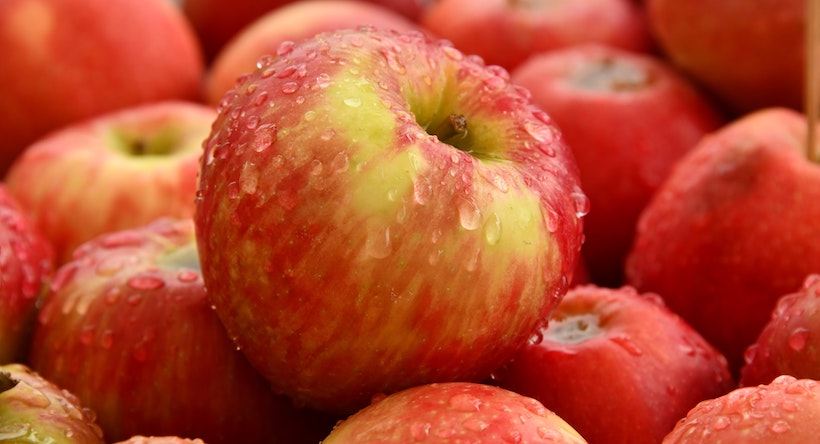
Apples come from the tree Malus domestica, which has north of 7,000 known cultivars. Apple fruits come in different sizes and display vibrant red, delicate pink, green, or yellow hues.
Thanks to the apple's wide variety in taste and texture, you'll likely find a variety that perfectly suits your taste (and matches the dish you're trying to make). For instance, to name just three: the Red Delicious is very crisp, Fujis tend to be large and sweet, and Granny Smiths are tart and crunchy.
Crab apples – Malus sylvestris – are a wild variety of apples, sporting a much smaller fruit than their domesticated counterparts. Most crab apples have a sour, tart taste but are pretty edible. People generally use them to make jams and jellies instead of eating them raw.
Further afield from the family, the apple's closest relatives are well-known fruit bearers such as pears, peaches, plums, and cherries. All of these plants belong in the Rosaceae (rose) family, along with 2500 other species.
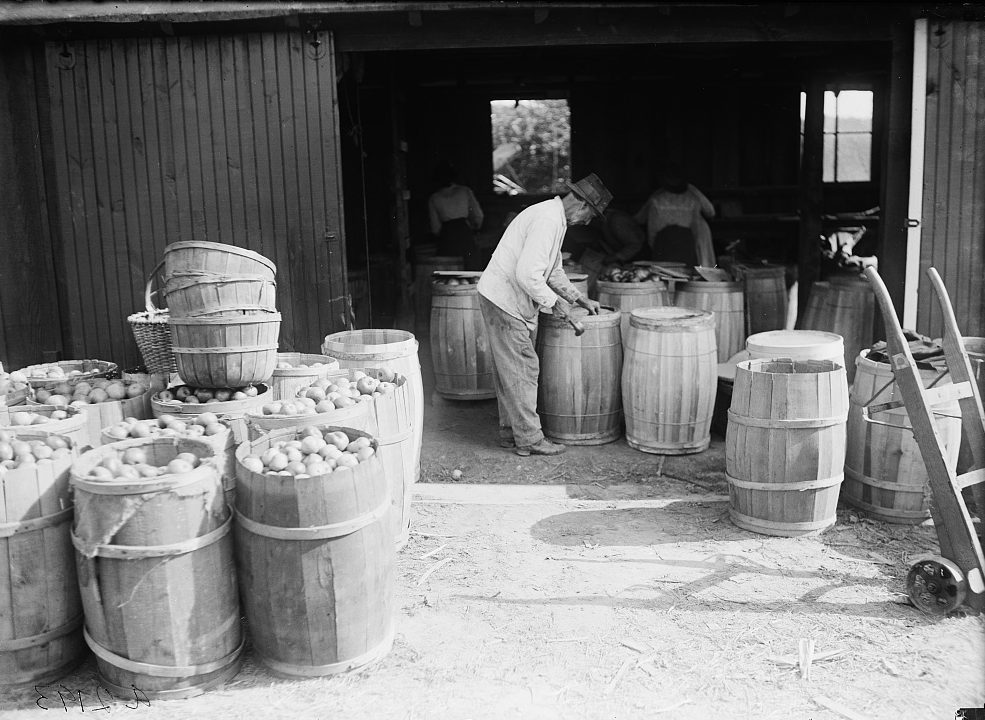
Per the National Horticulture Board, apples grow best in temperate zones with moderately warm summers and cold winters. The trees also develop the most fruit when exposed to full sunlight. In terms of soil quality, apples prefer a neutral pH of 6.0 to 7.0 and a loamy composition.
While it takes an average of eight years before they begin to bear fruit, apple trees can last over 30 years, which we call a worthwhile investment! Trees can yield between 75 pounds to over 130 pounds of apples every year.
Apples are extreme heterozygotes – the children of two parents are rarely like their parents. Planters grow a cultivar from rootstocks, an underground part of the plant that can create new above-ground growth. They use a technique called grafting to ensure their crop's quality and consistency with a given variety.
Can an apple a day really keep the doctor away?
Apples are rich in vitamin C, fiber, and numerous antioxidants. Many studies suggest that the antioxidants found in apples, like quercetin, have anti-cancer, anti-inflammatory, and anti-viral properties, among other benefits.
Do you peel your apples? Two-thirds of an apple's fiber (along with many antioxidants) comes from the peel. Peeling them means that you're mostly getting carbs – in the form of simple sugars – and water, which make up the bulk of the apple's flesh.
The Old English word "æppel" comes from the Proto-Germanic root "aplaz," which means fruit. The word soon morphed into the Scottish "aipple" and the more well-known English word "apple."
Common Apple Dishes and Foods
We cannot talk about the history of the apple without mentioning some of our favorite treats!
While you can eat many apple varieties as they are, apples are incredibly versatile when used for cooking. Apples are an essential component in many sweet and savory dishes like pies, crumbles, cakes, stews, and casseroles.
You can also puree them to make apple sauce, boil them together with sugar and pectin for jams, and ferment their juice if you want cider or vinegar.
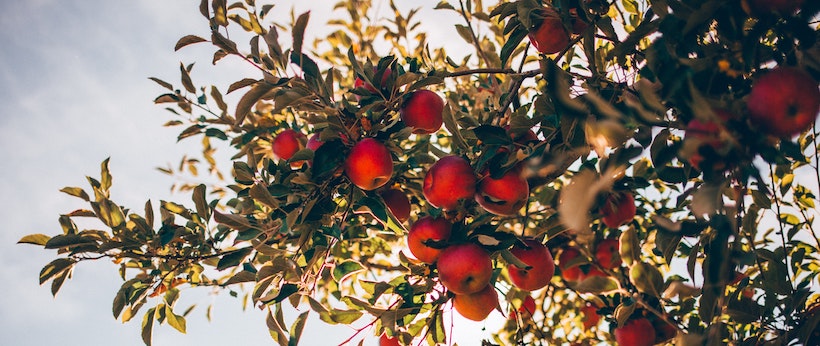
Research suggests that the apples flourished long before humans started domesticating them. Paleontological evidence traces the apple's early origins millions of years ago in the late Miocene period.
In 1929, a Russian scientist named Nikolia Vavilov was the first to identify the apple's primary ancestor – Malus sieversii. Full-DNA testing conducted in 2010 further confirmed his findings.
Malus sieversii is native to Kazakhstan's Tian Shan Mountains, where they grew in abundance for millions of years. These original wild apples grew in the forests near the foot of the snowy mountain range and spread across many miles. Some of the forests are still around today!
Before human domestication, the apple's history – and how it spread – is relatively unknown (but we have theories). The fruit-bearing trees needed other non-human methods to proliferate. For smaller fruits in the rose family such as cherries, winged animals could carry their seeds across vast distances.
Trees that grow large, heavy fruit like the apple (and the pear) must have relied on larger animals to transport the seeds. Otherwise, the fruits fall right below the tree and are outcompeted and overshadowed by its parent.
Plenty of evidence – everything from apple pips in Neolithic Britain to carbonized apple remains in Italy – suggests that humans have been eating apples for more than 10,000 years. However, many of those early apples were akin to tiny crab apples with little in common with most of the popular apples you see today.
The earliest signs of modern-day apple cultivation began along the Silk Road trading routes. These roads bridged the gap in Eurasia between the East and the West. Farmers and merchants either intentionally cultivated apple seeds or dropped apple cores along the road. These seeds hybridized (or cross-pollinated) with the crab apples local to the area and likely produced the domesticated apple.
The latest genetic research on the history of the apple supports this theory. It shows that 46% of the domesticated apple's genetic makeup comes from the Central Asian Malus sieversii, and 21% comes from European crab apples Malus sylvestris.
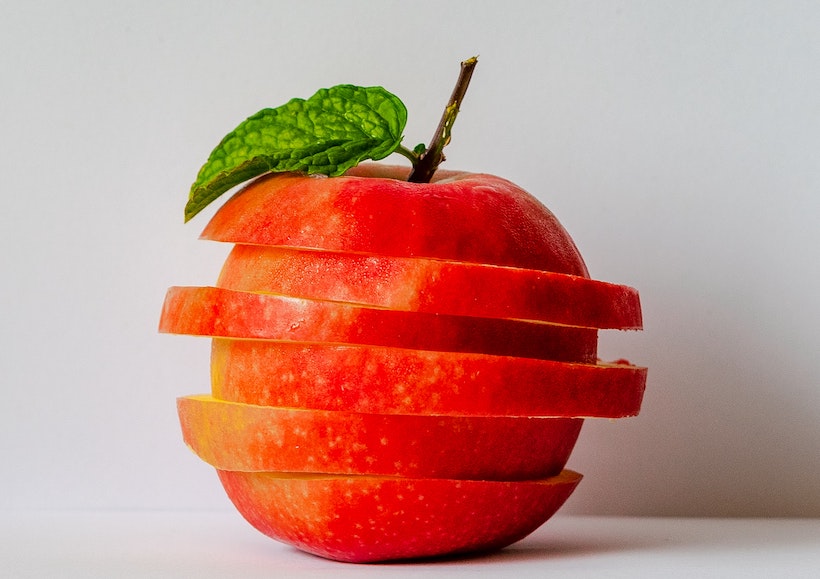
As a result of the heavily-used Silk Road trade route, the apple quickly spread across Europe and Asia. The apple's ability to thrive in temperate regions and its delicious taste further cemented its popularity.
Apples soon began to influence the local cultures of these two areas. Various works of European art and literature showcase or make mention of the apple. The Chinese associated apples with peace, owing to the fact that the word "apple" sounds like the Chinese word for peace!
Apples came to North America with the pilgrims who founded the Massachusetts Bay and Jamestown colonies in the early 1600s.
These settlers brought apple seeds and cuttings from the Old World plant in their new home. However, most of the resulting trees fared poorly in the local climate. Harsh winters and late-spring frosts killed many trees, but new and tastier variants soon came about from the surviving lot.
The colonists mostly used those early apples to make cider since earlier varieties were not very palatable. Due to sanitation concerns, even the children would drink fermented cider at meals instead of water.
Over time, hundreds of apple cultivars developed within the east coast area, and their use as food became more widespread. The pilgrims would eat them fresh, fry, stew, and bake these fruits as part of their meals.
Modern-day apple orchards combine the apple's rich heritage with industrial knowledge to grow higher-quality crops.
Eventually, many variants quickly become the household names we all know and love like the Red Delicious, McIntosh, Empire, and Honeycrisp. While newer apples remain the most popular, heirloom and antique varieties are enjoying a resurgence.
In 2018, the US produced 5.7 million metric tons of apples, placing the apple second among the most grown fruits in the country (only beaten by grapes – it's hard to compete with wine). The most prolific apple-producing states include Washington, Michigan, New York, California, Virginia, and Ohio.
China, however, remains the leading apple producer worldwide. In 2019 alone, the country made over 41 million metric tons of apples.
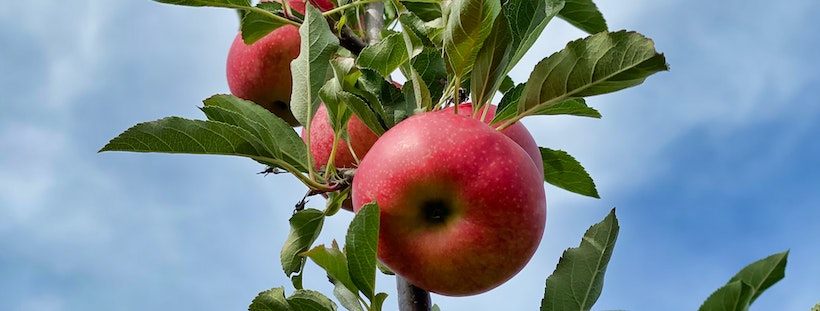
Let's talk numbers!
Did you know that the heaviest apple weighed a little over four pounds? The fruit came from a Japanese farm in Hirosaki City and became a part of the Guinness World Book of Records in 2005.
Dan Bussey, the author of The Illustrated History of Apples in the United States and Canada, identified and listed over 16,000 apple varieties grown in North America. Quite the impressive feat!
In the US, local orchards only grow about a hundred of these apple varieties commercially, with the top ten comprising over 90% of the national yield. The most popular apple varieties include the Red Delicious, Mcintosh, Honey Crisp, Granny Smith, and Golden Delicious.
Americans love apples so much that the average consumer eats about 28 pounds of apples and apple-related products per year!
The apple and its popularity means it crops up in many places in our culture. Here are just a few culturally significant places you'll find our favorite fruit.
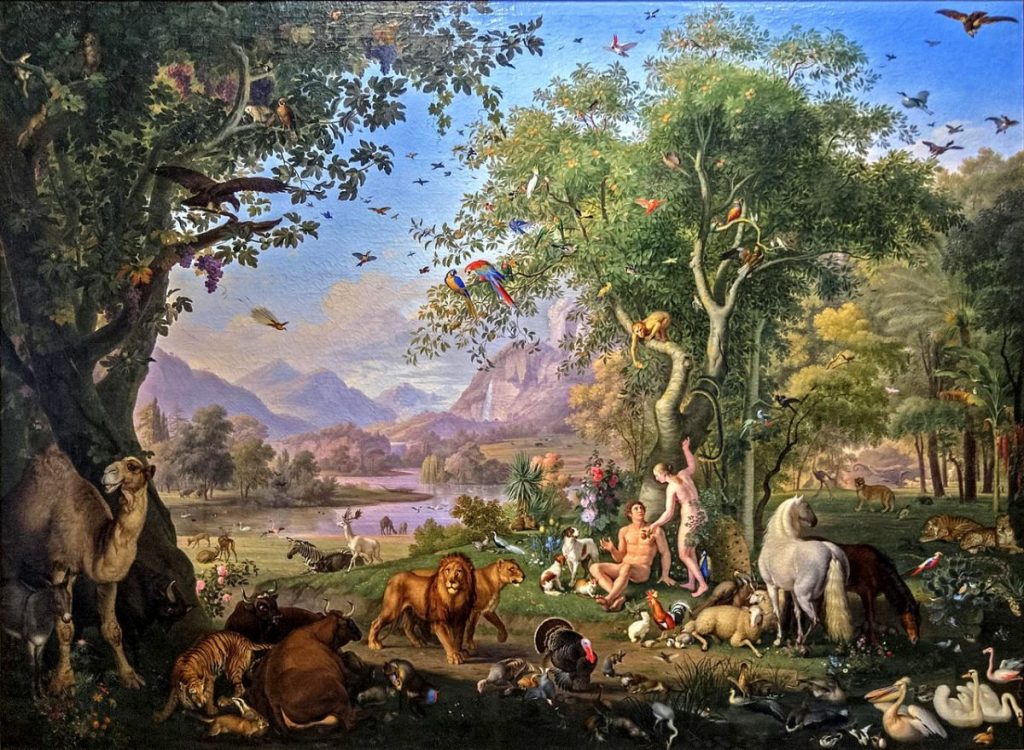
When someone says "forbidden fruit," a shiny, deep-red apple usually comes to mind.
In the Book of Genesis (the first book of the Hebrew Bible) creation story, Adam and Eve were not allowed to eat fruit from the Tree of Knowledge. Oddly enough, the holy book never mentions the word "apple," so how did this innocent fruit get such a bad rap?
The apple appearing as the "forbidden fruit" likely originated in Western Europe. Some researchers agree that apple's unfortunate Latin name – mălum, might be the root cause. It's incredibly similar to the Latin word for evil – malum; compare 'malus' to other Latin derived words such as malice, malignant, and malaise.
In one Latin translation of the Bible, a line from Genesis states, "de ligno autem scientiae boni et mali.", roughly translated as "the tree of the knowledge of good and evil." The word "mali," – genitive of "mălum" – might be another contributing factor to the apple's age-old forbidden fruit title.
Writers have played a crucial role in the history of the apple. Numerous authors across different periods framed apples as objects of desire, temptation, and danger.
In one story from Greek Mythology, the goddess Eris tossed the Golden Apple of Discord, eventually leading to the Trojan War.
For a more modern example, Snow White and the Seven Dwarfs is a childhood classic where the evil queen tricks Snow White into eating a poisoned apple.
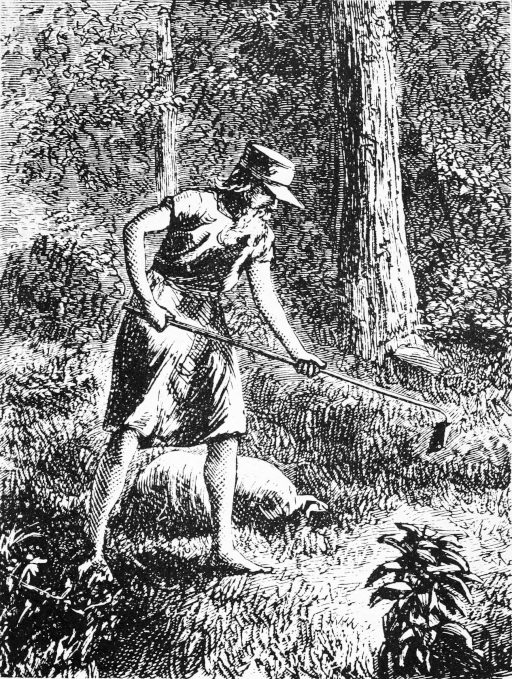
John Chapman, also known as Johnny Appleseed, was a famous 19th-century horticulturist who made significant contributions to the apple's westward expansion in America.
He moved from Pennsylvania to Ohio in the 19th century, where he brought apple seeds and planted them throughout his journey. While most stories paint him as a selfless provider of seeds to poor settlers, they usually forget to mention his talent as a businessman.
Johnny planted apple orchards along popular routes. He then traded the seedlings to new settlers who were looking to grow orchards for their homes. His nomadic, unmarried lifestyle meant that he could cover more ground than most other local orchard owners.
Many apple-related phrases have stood the test of time, remaining relevant even today. You've likely encountered "An apple a day keeps the doctor away" or "The apple of my eye," both of which highlight the apple's positive traits.
However – just as in the forbidden fruit – you can use apples to express negativity, as well. The expression, "How do you like them apples?" dates back to World War One. The Allied forces' anti-tank grenade had the nickname "toffee apple." The soldiers used this phrase to taunt their enemy.
"One apple can spoil the barrel" is another well-known term, which means even one troublesome person can negatively influence the rest of their group. This phrase can be traced back to several writings as early as the 16th century.
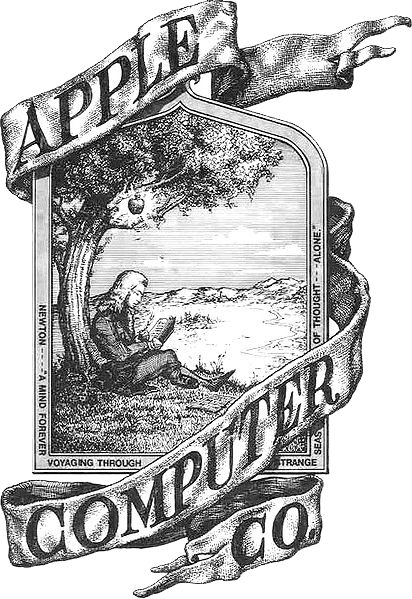
And of course, it's impossible to write about the history of apples without mentioning Apple Computer. While Apple Computer is now one of the largest public companies globally, before 1976 Apple founders Steve Jobs and Steve Wozniak had a casual partnership selling (mostly) phone "phreaking" devices.
Steve Jobs credits the name "Apple" to his experiences at the All-One Farm in Oregon – and one of Jobs' fruitarian diet phases.
And it wasn't the last time Apple turned to the apple for inspiration. Apple's 1993 Personal Digital Assistant (PDA) was called the Newton, inspired by the apocryphal story of Newton sitting under an apple tree and 'discovering' gravity. And Apple's longest-running computer line is called the Macintosh after the popular (tasty) apple cultivar, the McIntosh.
We'll never know exactly when an inspired human first picked up a wild apple and saw the possibilities – but we certainly owe them a debt of gratitude. From wild, small, sour varieties, we now have thousands of cultivars to pick from for eating and baking.
So the next time you buy a bunch of apples, think back on their spread from the forests of Kazakhstan to your cart. That journey was totally worth it!